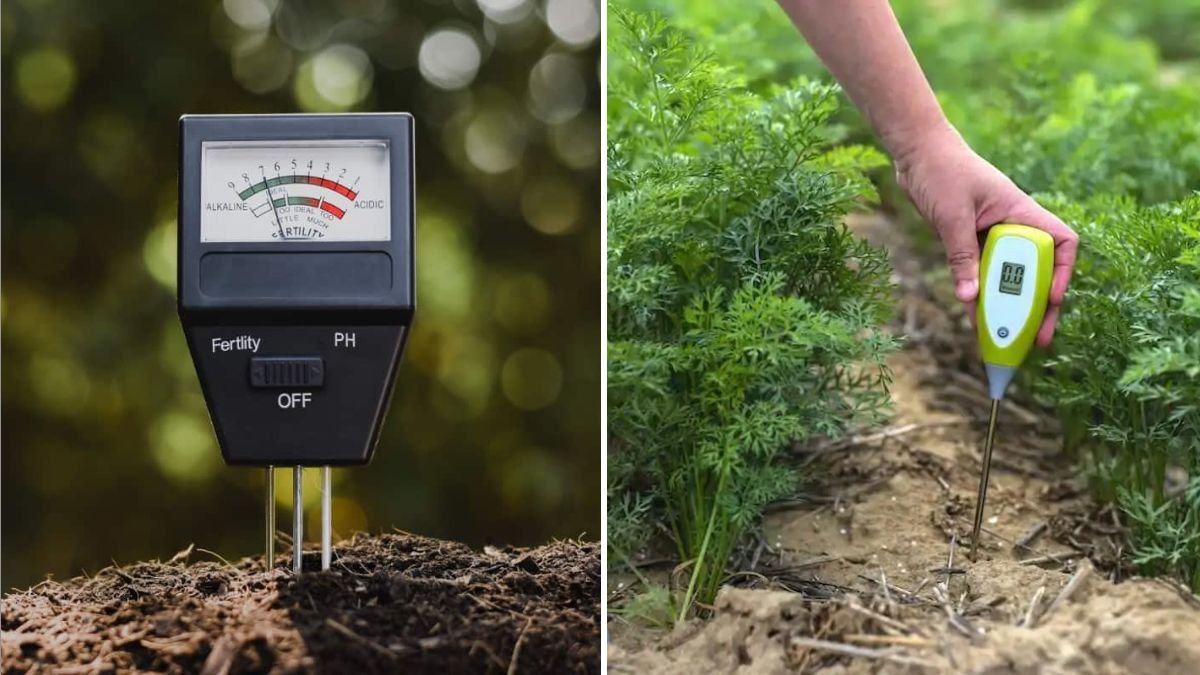Healthy soil is the foundation of every thriving garden, and one of the most important factors in soil health is its pH level. Soil pH determines how easily plants can access essential nutrients, and when it’s off-balance, even the richest soil can leave your plants struggling. Too acidic, and plants may be starved of calcium and magnesium. Too alkaline, and they may fail to take up iron, phosphorus, and other key nutrients.
So how do you know if your soil leans too far one way or the other? Let’s explore what soil pH means, the signs of imbalance, and the best methods for testing and fixing it.
What Is Soil pH?
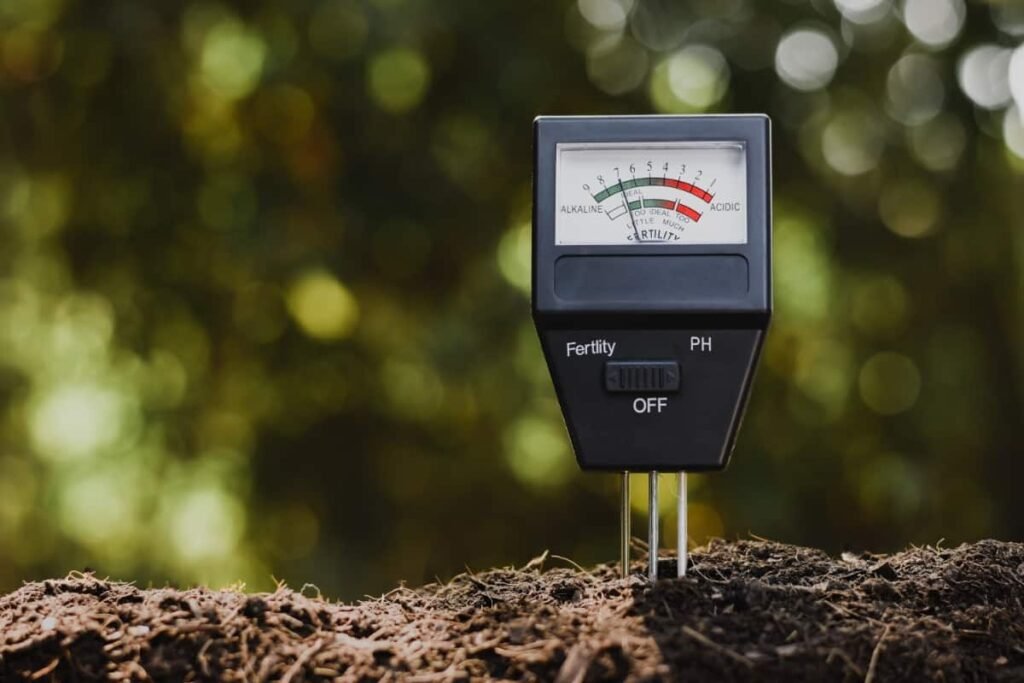
Soil pH measures how acidic or alkaline your soil is on a scale of 0 to 14:
- pH 0–6.9 = Acidic soil
- pH 7.0 = Neutral soil
- pH 7.1–14 = Alkaline soil
Most plants prefer soil between pH 6.0 and 7.0, but the “ideal” range varies. For example:
- Blueberries, azaleas, and rhododendrons thrive in acidic soil (around pH 4.5–5.5).
- Vegetable crops like tomatoes, peppers, and beans prefer slightly acidic to neutral (pH 6.0–7.0).
- Lavender, lilacs, and clematis do better in slightly alkaline soil (pH 7.0–7.5).
Understanding your soil’s pH helps you match the right plants—or amend soil for the plants you love.
Signs Your Soil May Be Too Acidic
If your soil is overly acidic, plants often show stress in the following ways:
- Yellowing leaves (chlorosis): Especially between the veins, often due to iron or magnesium deficiency.
- Poor growth or stunted plants: Nutrient uptake is blocked, so plants never reach their potential.
- Frequent moss growth: Moss thrives in acidic conditions, especially in shady spots.
- Weedy invasions: Sorrel, plantain, and dandelions often colonize acidic soil.
- Weak stems and poor fruiting: Low calcium levels lead to issues like blossom end rot in tomatoes.
Signs Your Soil May Be Too Alkaline
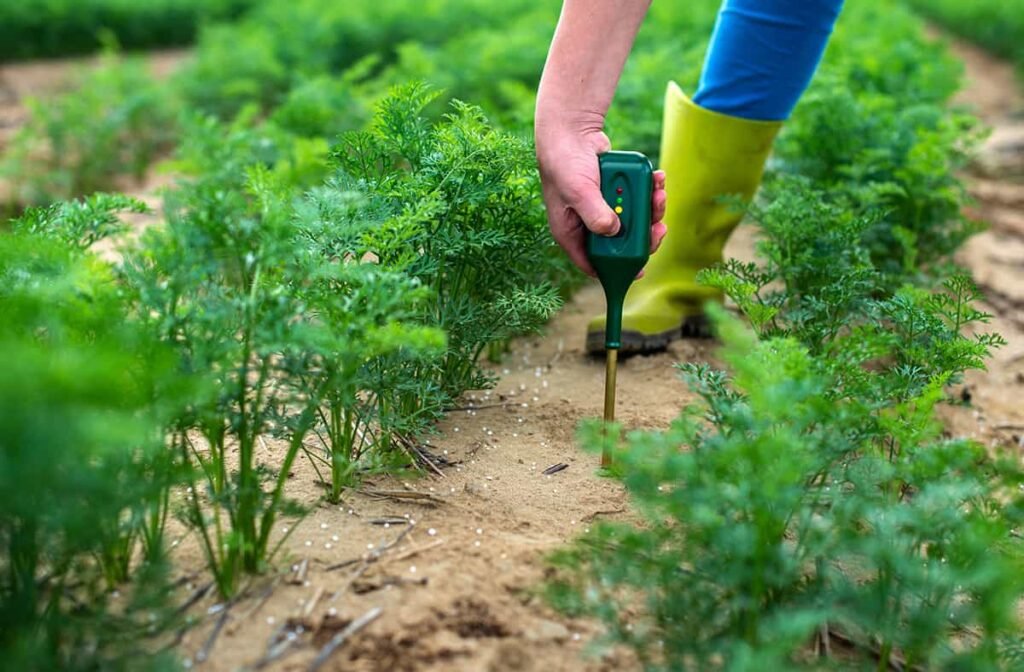
Soil that’s too alkaline presents different challenges:
- Yellowing leaves despite adequate fertilization: Often due to iron chlorosis—plants can’t access iron in alkaline soil.
- Leaf tip burn or browning edges: A sign of potassium lockout.
- Hard, crusty soil surface: Alkaline soils often have excess salts that create compaction.
- Stunted growth of acid-loving plants: Hydrangeas won’t turn blue, azaleas and blueberries fail to thrive.
- Poor nutrient availability: Phosphorus, zinc, and manganese get “tied up” in alkaline conditions.
Simple Ways to Test Soil pH
You don’t need a full laboratory to get a good idea of your soil’s acidity or alkalinity. Here are a few approaches:
1. Home Testing Kits
Inexpensive soil pH kits from garden centers use color indicators to show your soil’s pH range. They’re simple, quick, and accurate enough for most gardeners.
2. Digital pH Meters
Electronic meters are reusable tools that give instant readings when inserted into moist soil. For best results, calibrate them regularly and test multiple spots in your yard.
3. DIY Vinegar and Baking Soda Test
- Collect two soil samples.
- Add vinegar to one sample. If it fizzes, the soil is alkaline.
- Add baking soda mixed with water to the other. If it fizzes, the soil is acidic.
This won’t give you an exact number, but it’s a fun way to detect extremes.
4. Professional Lab Tests
For the most accurate results, send a soil sample to your local agricultural extension service. Lab tests provide exact pH readings and detailed nutrient profiles.
How to Fix Soil That’s Too Acidic
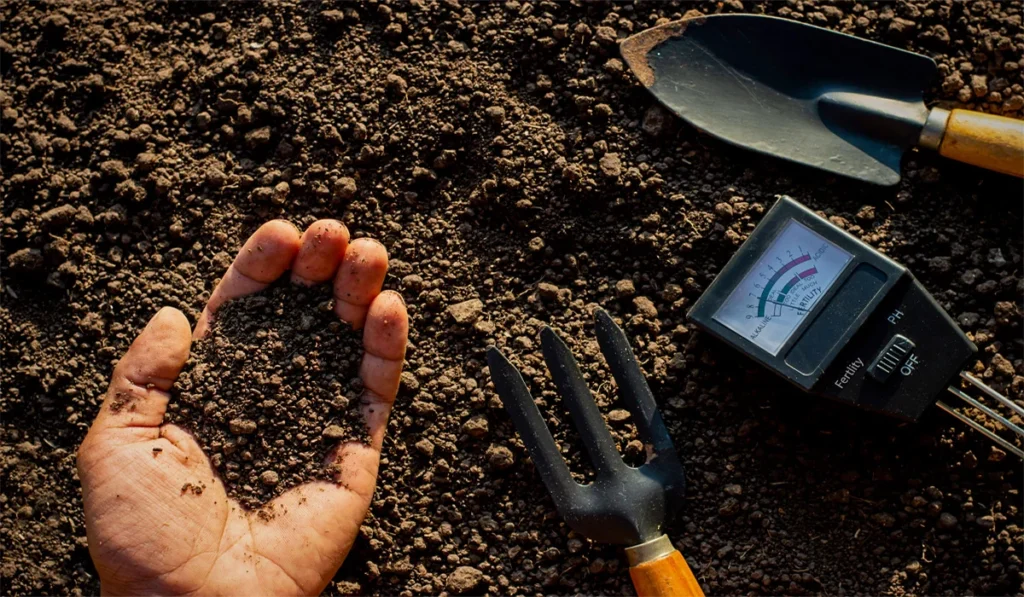
If your soil is too acidic, the goal is to raise the pH toward neutral.
Best amendments for acidic soil:
- Agricultural lime (calcium carbonate): The most common and effective way to raise pH. Dolomitic lime also adds magnesium.
- Wood ash: Provides potassium and raises pH, but use sparingly to avoid overcorrection.
- Bone meal: Slowly releases calcium and phosphorus while moderating acidity.
Tips for application:
- Always test soil before applying amendments.
- Apply lime in fall or early spring to allow time for adjustment.
- Mix thoroughly into the top 6–8 inches of soil for best results.
How to Fix Soil That’s Too Alkaline
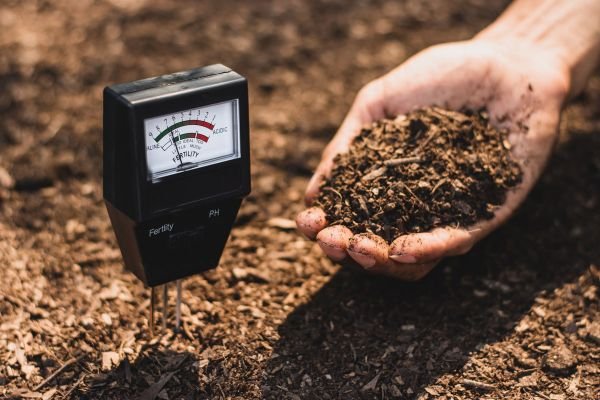
If your soil is too alkaline, you’ll need to bring the pH down.
Best amendments for alkaline soil:
- Elemental sulfur: Soil bacteria convert sulfur into sulfuric acid, lowering pH gradually.
- Peat moss: Helps acidify while adding organic matter.
- Pine needles or oak leaves: Slightly acidifying mulches that work over time.
- Iron sulfate or aluminum sulfate: Quick fixes for lowering pH, but use cautiously and test regularly.
Tips for application:
- Lowering soil pH is slower than raising it—expect gradual improvement over multiple seasons.
- Combine acidifying amendments with regular applications of compost to balance nutrients.
- For containers, it’s often easier to use a soil mix formulated for acid-loving plants.
Working With Your Soil Instead of Against It
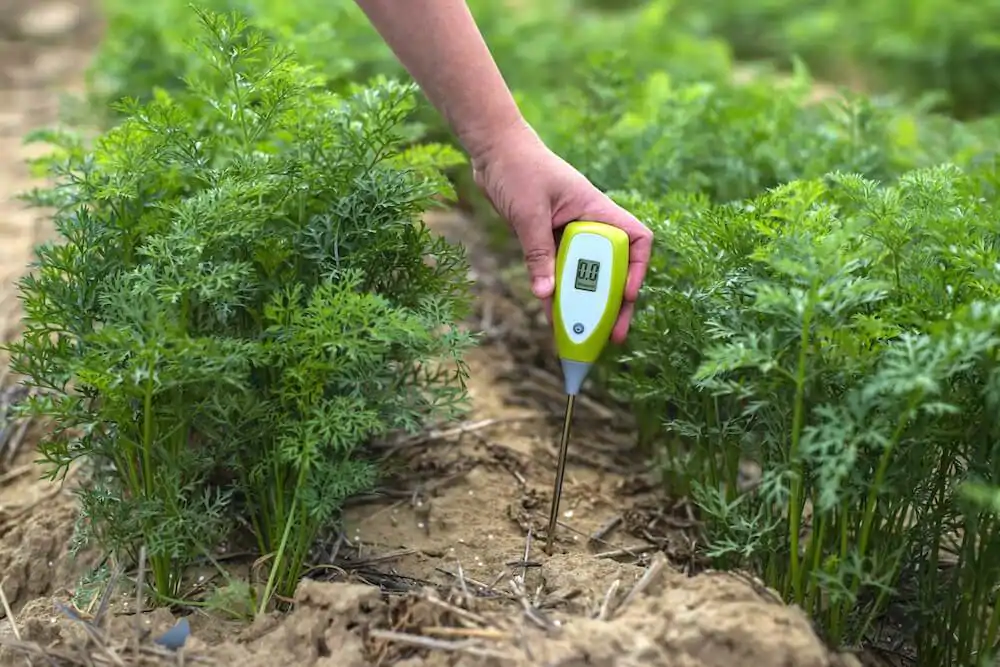
Sometimes, adjusting pH drastically isn’t practical. Instead, consider working with what you have:
- Plant acid-loving species in naturally acidic soil.
- Grow alkaline-tolerant plants (like lavender, yarrow, or lilac) in alkaline soil.
- Use raised beds or containers with custom soil mixes for plants with special pH needs.
By choosing plants suited to your soil’s natural tendencies, you reduce the need for constant amendments.
Final Thoughts
Soil pH may seem like a small detail, but it has a big impact on plant health and productivity. Acidic soils lock away calcium and magnesium, while alkaline soils block iron and phosphorus. By learning to recognize the signs, testing your soil, and applying the right natural amendments, you can bring your soil back into balance.
Remember: the key isn’t just correcting pH—it’s creating an environment where nutrients are available, microbes thrive, and plants grow vigorously. With the right knowledge and care, you’ll unlock the full potential of your garden’s soil.
